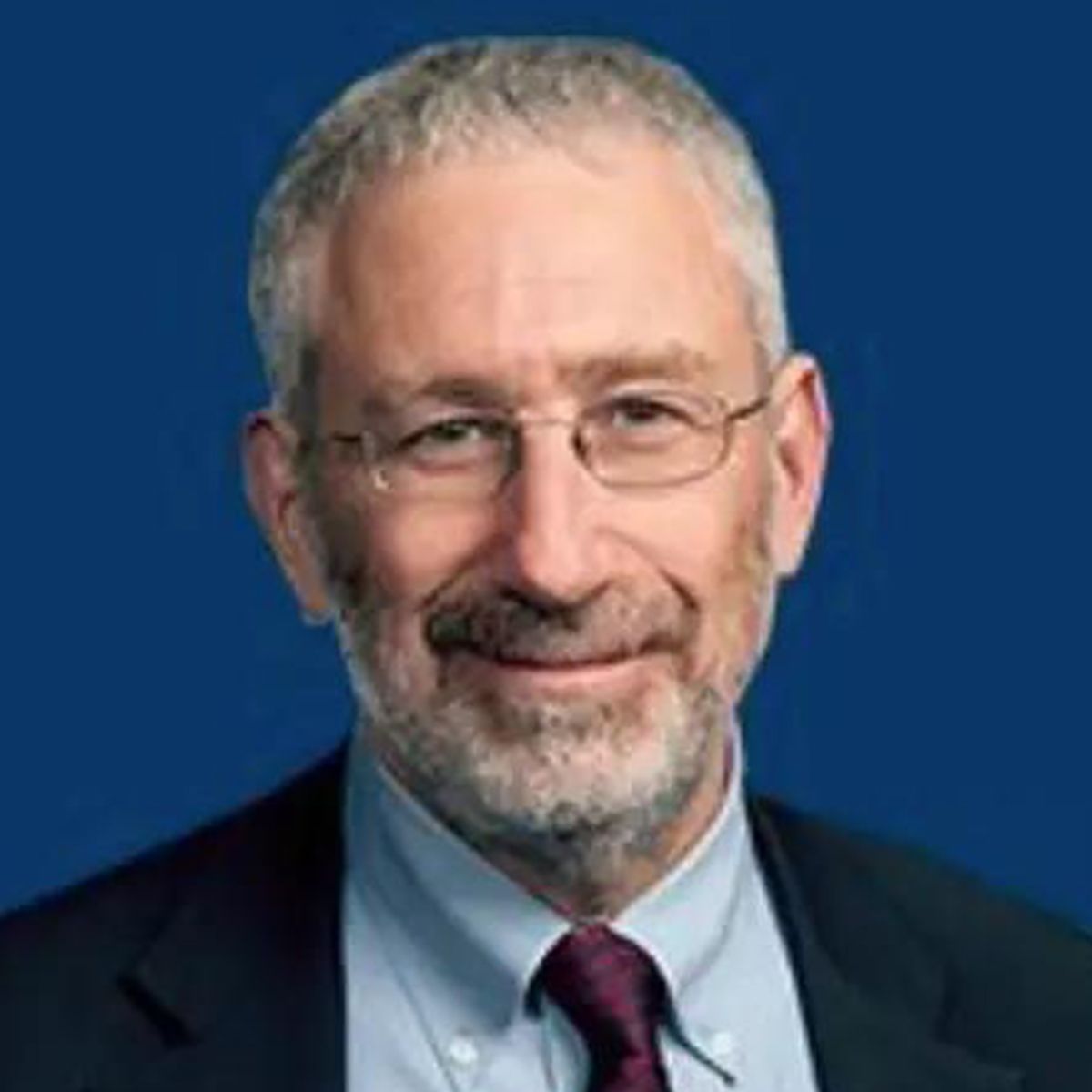Article
Dostarlimab Plus Chemotherapy Shows Survival Benefit, Fills Unmet Need for Patients With Recurrent Endometrial Cancer
Author(s):
Combining the immune checkpoint inhibitor dostarlimab-gxly with standard-of-care chemotherapy elicited an increase in progression-free survival rates compared with chemotherapy alone for patients with primary advanced or recurrent endometrial cancer.
Mansoor Raza Mirza, MD

Combining the immune checkpoint inhibitor dostarlimab-gxly (Jemperli) with standard-of-care chemotherapy elicited an increase in progression-free survival (PFS) rates compared with chemotherapy alone for patients with primary advanced or recurrent endometrial cancer demonstrating unprecedented HRs, according to Mansoor Raza Mirza, MD.1
Benefit was especially pronounced for those with mismatch repair–deficient (dMMR), microsatellite instability–high (MSI-H) tumors (n = 53), according to updated data from the phase 3 RUBY trial (NCT03981796) that was presented at the 2023 Society of Gynecological Oncology (SGO) Annual Meeting on Women’s Cancer.1 The estimated PFS rate in the dMMR/MSI-H cohort of patients at 24 months was 61.4% (95% CI, 46.3%-73.4%) in the dostarlimab plus chemotherapy group vs 15.7% (95% CI, 7.2%-27.0%) in the placebo plus chemotherapy group (n = 65; HR, 0.28; 95% CI, 0.16-0.50; P < .001).
“We have to get this approved as soon as possible,” Mirza said. “Our patients deserve this treatment as soon as possible. We are not only intensely improving the PFS, but also overall survival [OS] and our patients need that.”
In the placebo-controlled, randomized trial, patients in the overall intention-to-treat population (n = 245) achieved a 24-month PFS rate of 36.1% (95% CI, 29.3%-42.9%) in the dostarlimab arm vs 18.1% (95% CI, 13.0%-23.9%) for those in the placebo arm (n = 249; HR, 0.64; 95% CI, 0.51-0.80; P < .001). Additionally, the 24-month OS rate was 71.3% (95% CI, 64.5%-77.1%) compared with 56.0% (95% CI, 48.9%-62.5%), respectively, (HR, 0.64; 95% CI, 0.46-0.87; P = .0021).2
In an interview with OncLive®, Mirza, the chief oncologist in the Department of Oncology, Rigshopitalet, at the Copenhagen University Hospital in Denmark, and the medical director of the Nordic Society of Gynecologic Oncology, highlighted key safety and efficacy data from the trial, which are still maturing, and their potential impact on the treatment paradigm of endometrial cancer.
What was the rationale for initiating the RUBY trial?
We know that carboplatin/paclitaxel in [the] first line is effective in endometrial cancer, but it’s a short-term efficacy—the median OS is less than 3 years. That has been [the survival] for many years and we haven’t changed that.
We have achieved considerable progress in later-line disease with immune checkpoint inhibitors. In the first line, the first [class of] drug we introduced were progestins in 1961.3 Approximately 15 years ago, we introduced carboplatin/paclitaxel, and nothing has happened really since then.
It’s a real unmet need and we know that chemotherapy enhances the efficacy of immune therapy. It makes a lot of sense to test carboplatin/paclitaxel in combination [with the] immune checkpoint inhibitor dostarlimab, which is a PD-1–[directed agent] in both the dMMR [population] and overall population.
What were the enrollment criteria for RUBY?
Patients had locally advanced [disease], stage III and IV, or [had experienced] first relapse. [Patients also] may have received adjuvant treatment for stage I and II disease.
The beauty of this trial is that we have been very inclusive. For example, [patients with] carcinosarcomas are part of the study, which is rare in other trials. [For] the patients who had received adjuvant chemotherapy, if they had a treatment-free interval of 6 months or more, these patients can enter the study. Many would argue that we should have taken 12 months—then we would remove these patients from the clinical trial. It’s a pragmatic way to do the trial.
Prior radiotherapy was allowed. We stratified patients according to their MMR status and according to their stage of disease [III, IV, or first relapse] and prior radiation therapy. Patients were [randomly assigned] 1:1 to receive chemotherapy, carboplatin/paclitaxel, every 3 weeks for 6 cycles. On top of that, we added dostarlimab or placebo every 3 weeks for 6 cycles. After 6 cycles of chemotherapy plus dostarlimab patients continued monotherapy [with] dostarlimab or placebo every 6 weeks for up to 3 years. We were looking for multiple primary end points, investigator assessed PFS and OS. There were quite a few secondary end points as well.
What are some of the key efficacy data being presented at 2023 SGO?
We will be presenting the interim analysis [in the future]; however, many of the primary end points are already mature. For PFS we have 2 primary end points. One is [in] the dMMR population, there we see [an] unprecedented increase in PFS. We have a follow-up of 25 months. At 2 years, the [estimated] PFS [rate] has increased from approximately 15% to 61%, with an HR of 0.28. If you look at the survival curves, especially for the dostarlimab arm, after 12 months of follow-up you don’t see any more progression, the curves are flat, and that tells me that probably we are curing some of these patients.
The overall population [had] a very strong, statistically significant improvement. [There was a] long-term benefit in the whole group of patients, both dMMR and pMMR. When we look at the OS, although we have only 33% maturity, we see that curves are separating and keep the separation. We have OS for the intention-to-treat population with an HR of 0.64, which is unprecedented. We have to wait for 50% [of] events; however, the way the curves are separating, I’m quite confident that we will keep this strong efficacy of the drug.
When we look at the subgroups, according to dMMR and pMMR, for OS both are positive. However, we have only 33% events, so we are watching. The OS for the dMMR population has an HR of 0.30, 70% improvement which is again unprecedented.
What is the safety profile of dostarlimab plus chemotherapy?
The safety profile had no surprises. You see the adverse events [AEs] that you see with the single agents, carboplatin, paclitaxel, and dostarlimab. There were 8% more AEs in the arm with dostarlimab.
[AEs] did not negatively affect the delivery of carboplatin/paclitaxel—we could deliver the same dose [and] same number of cycles in both arms. Most of the AEs are low grade and they’re almost equal in both the placebo group and dostarlimab group, except rash which is 10% higher in the dostarlimab group. [It is a] quite comfortable, easy to manage treatment.
What are the future implications of this research?
There will be patients who progress after this treatment. Can we further improve first-line treatment? If they progress, what is the next step? We are privileged that we now have molecular classification, and we are trying to figure out the new targeted agents, which will help our patients to live longer or even [be] cured.
The main message for my colleagues is that we have changed the landscape by doing clinical trials and doing it together. If you look at the RUBY trial, it’s a true international collaboration of so many countries, so many cooperative groups— The European Network for Gynecological Oncological Trial groups was the lead and Gynecologic Oncology Group was collaborating.
When we work together, we can deliver [and] produce some nice results. It is such a pleasure to work with our patients. Thanks to them and their families. We are privileged to see the changes happening in our lifetime.
References
- 1. Mirza MR, Chase DM, Slomovitz BM, et al. Dostarlimab in combination with chemotherapy for the treatment of primary advanced or recurrent endometrial cancer: a placebo-controlled randomized phase 3 trial (ENGOT-EN6-NSGO/GOG-3031/RUBY). Presented at: 2023 Society of Gyneologic Oncology Annual Meeting on Women’s Cancer; March 25-28, 2023; Tampa, FL.
- 2. Mirza MR, Chase DM, Slomovitz BM, et al; RUBY Investigators. Dostarlimab for primary advanced or recurrent endometrial cancer. N Engl J Med. Published online March 27, 2023. doi:10.1056/NEJMoa2216334
- 3. Kim JJ, Kurita T, Bulun SE. Progesterone action in endometrial cancer, endometriosis, uterine fibroids, and breast cancer. Endocr Rev. 2013;34(1):130-162. doi:10.1210/er.2012-1043







